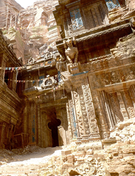Create Beautiful Environments With UE 5

Course Format
Skills Level
Duration
Q&A
Feedback
Lecture Type
The more you know, the better.
STUDENT GALLERY











Bringing out the best in talent
Tragan Monaghan is a 3D environment artist with over 10 years of experience in the gaming industry. He has worked on high-profile titles such as Titanfall 2 and Apex Legends as a 3D environment artist for Respawn Entertainment. Most recently, he is a Lead 3D environment artist for NetEase.
Instructor's Gallery



GET ONE YEAR ACCESS AND TRANSFORM YOUR ARTISTIC JOURNEY
Take your CGMA learning further with CGMA+, a companion add-on featuring
over 70 new, stand-alone workshops—more than 250 hours of content you
won’t find in your core CGMA program. You’ll learn from multiple
instructors, each with a unique style, so you can see how different
artists approach the same subject in various ways. This additional
material builds on what you’re already studying, broadening your
perspective and helping you look at topics from fresh angles. It’s a
straightforward way to strengthen your studies and boost your skills.

PRICING SCHEDULE
3x Payments
$332.67
2x Payments
$499
Full payment
$998

What makes this learning experience unique?
PERSONALIZED FEEDBACK
Receive personalized feedback on all assignments from the industry’s top professionals.
LIFETIME ACCESS
Enjoy lifetime access to the spectrum of course content, including lectures, live Q&As, and feedback sessions.
CERTIFICATION
Show off your Certification of Completion when you turn in 80% of course assignments.
FLEXIBLE LEARNING
Learn anywhere, anytime, and at your own pace with flexible, online course scheduling.
Need guidance? We’re Here to Help.
We can help with admissions questions, portfolio review/course recommendations!





















